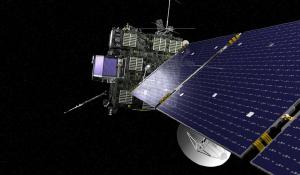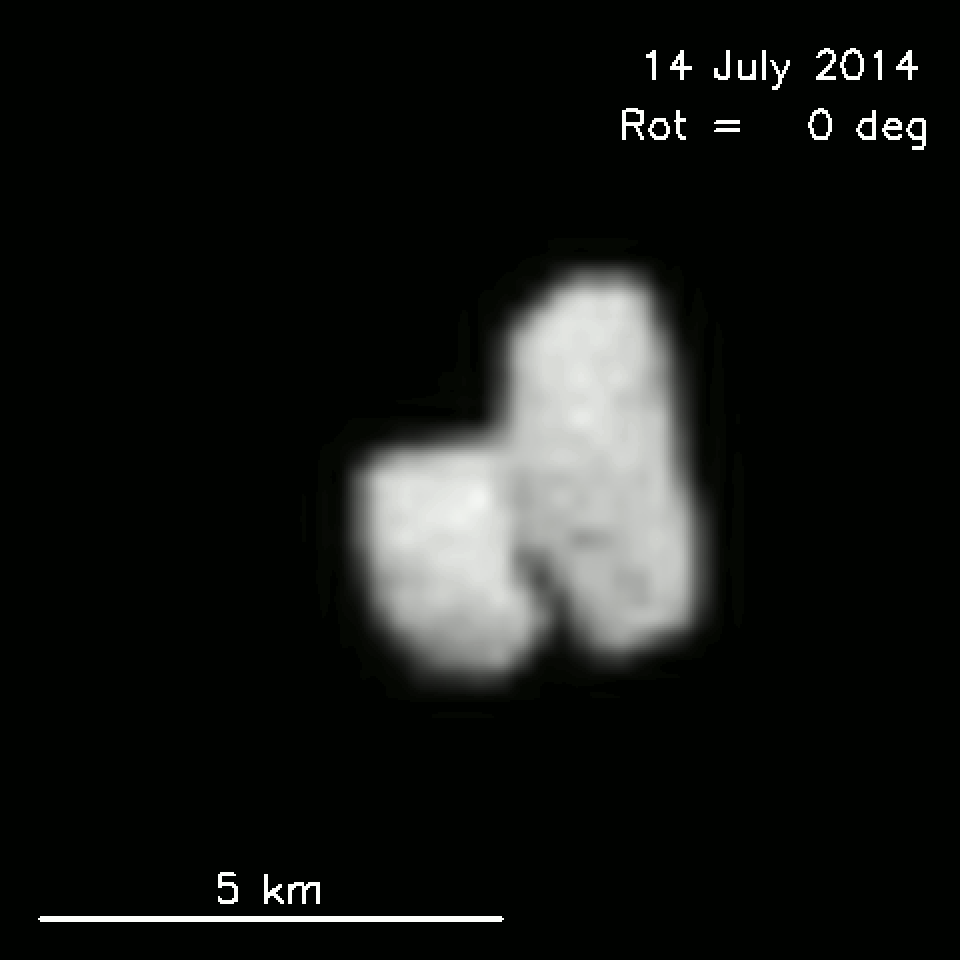Blog
3 2 1 Contact
20 July 2014
 ESA - J. Huart
ESA - J. HuartThe Rosetta spacecraft is on its way to an asteroid known as 67P/Churyumov–Gerasimenko. In August it will go into orbit around the asteroid, and then in November it will put a lander known as Philae on the rock. The surface gravity of this asteroid is less than 1/20 that of Earth, so Philae will actually have harpoons to keep it attached to the asteroid. It’s an ambitious mission, since unlike many landings we have no idea what the surface of the asteroid will be like. In fact until recently, we weren’t entirely sure what the shape of 67P/Churyumov–Gerasimenko actually is.
 ESA/Rosetta/MPS
ESA/Rosetta/MPSBut as Rosetta approaches the asteroid we are starting to get an idea of its shape. What we’re finding is rather interesting. It turns out 67P/Churyumov–Gerasimenko is what’s known as a contact binary. These are thought to form when two asteroid or comet bodies come into contact at speeds low enough to remain in contact. Contact binaries are not particularly rare, but they are unusual, and we’re lucky to have the opportunity to study them close up. It will, however, make orbiting and landing on the asteroid a bit more of a challenge.
As we get higher resolution images, the necessary changes to Rosetta’s orbit can be made. Then it will just be 3 2 1 contact.